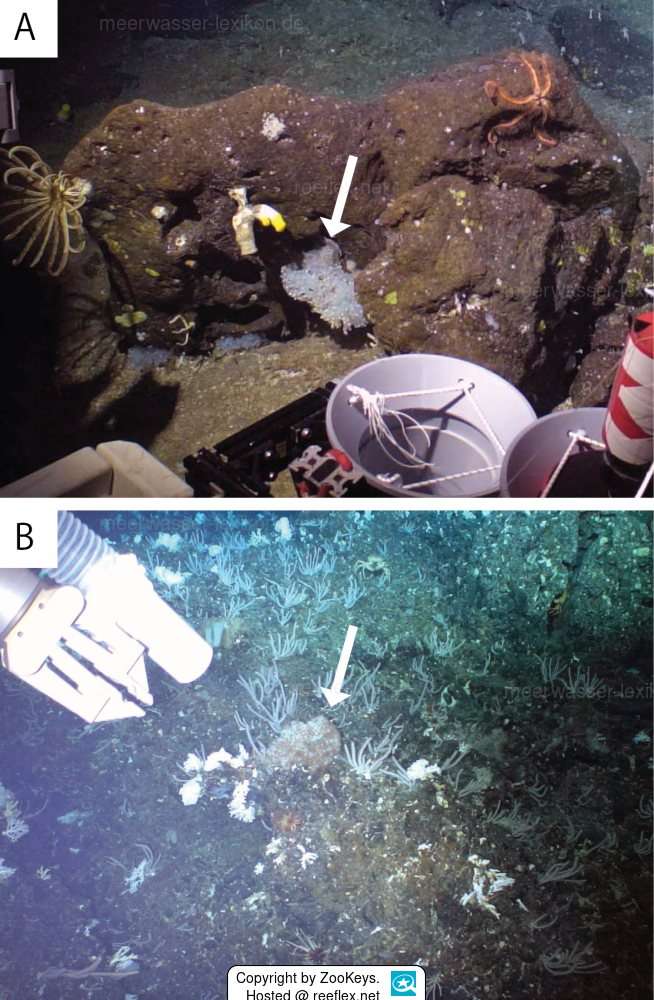Info
Parazoanthidae, are characterized by a symbiotic relationship with massive hexasterophores and demospongiae sponges.
The new species was already found by ROV on a glass sponge (Farrea sp.) attached to rocks on the summit of hoho Seamount, Nishi-Shichito Ridge, Japan on 299.11.2020.
The living polyps and tentacles of Vitrumanthus flosculus are transparent and yellowish in color and have 22 - 26 tentacles.
Individual or colonial polyps protrude irregularly from the overall three-dimensional structure of the hexasterophore host sponge, with the base of the polyps embedded in the tissue of the sponge.
Etymology: The species name “flosculus” means 'little flower' or 'little blossom' in Latin.
Kise H, Reimer JD, Iguchi A, Ise Y, Tsuchida S, Fujiwara Y (2024)
Parazoanthidae (Cnidaria, Zoantharia) associated with glass sponges on the Nishi-Shichito Ridge, northwestern Pacific Ocean, with the description o
Kise H, Reimer JD, Iguchi A, Ise Y, Tsuchida S, Fujiwara Y (2024)
Parazoanthidae (Cnidaria, Zoantharia) associated with glass sponges on the Nishi-Shichito Ridge, northwestern Pacific Ocean, with the description of a new species.
ZooKeys 1221: 343-362. https://doi.org/10.3897/zookeys.1221.131258







 ZooKeys
ZooKeys





